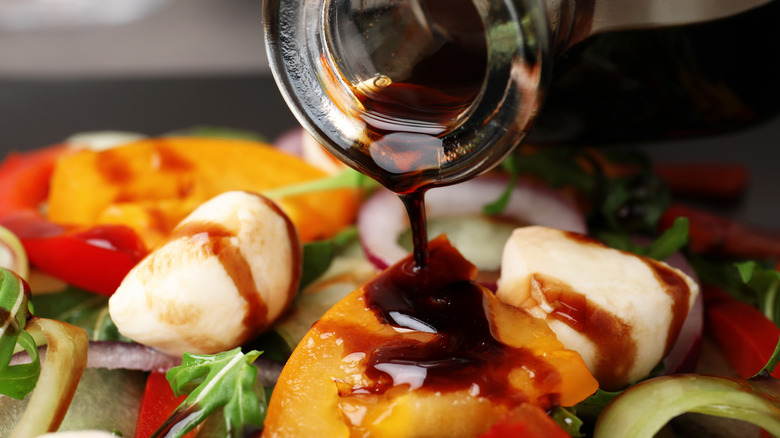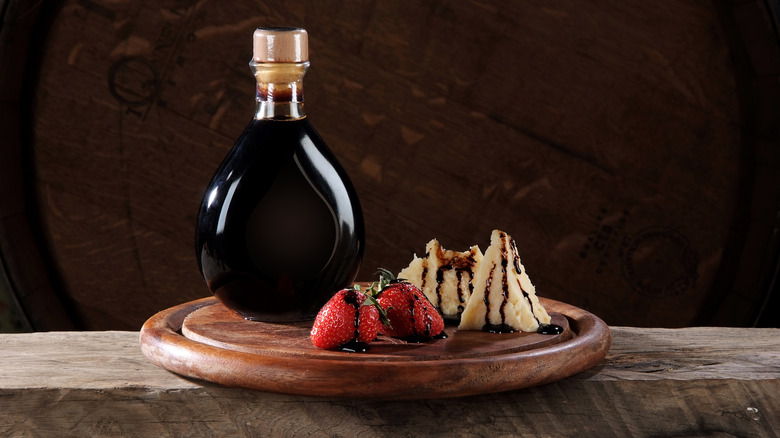You've Been Using Balsamic Vinegar Wrong This Whole Time
If you've ever browsed the Italian specialty shelf at the grocery store, you may have noticed that aged Balsamico di Modena vinegar can get pretty pricey. And if you've ever opened a bottle, you probably will agree it can be worth it. This is because the ultra-traditional stuff — labeled "Aceto Balsamico Tradizionale di Reggio Emilia" or "Aceto Balsamico Tradizionale di Modena," per Spruce Eats — is made without added ingredients in a tightly controlled, traditional process.
Compared to the industrial production of commercial balsamic vinegar, only about 20,000 bottles of artisanal balsamic are produced a year (via Italy Magazine), and the vinegar's complex flavors of fig, prune, oak, and juniper are results of the careful aging process(via Serious Eats). There are many good reasons you should always have balsamic in your kitchen; it doesn't just taste good and add zest to some of your favorite dishes, but it also has some health benefits.
If you're splashing some syrupy, traditionally made balsamic vinegar into your recipes or salad dressings, you might be surprised to learn you're using the ingredient all wrong.
How to use Balsamico di Modena the right way
If you have a bottle of aged Balsamico di Modena vinegar in your cabinet, here's an important warning: Don't use it for high-heat cooking or with too many other ingredients, because you run the risk of ruining or covering up its delicate flavor (per Old Town Olive). There are plenty of ingredients you can substitute for balsamic vinegar, so consider sprucing up your next main dish or salad dressing with cider vinegar or red wine vinegar and bringing out the balsamic where it can truly shine.
Instead of squashing the subtle flavors that balsamic vinegar offers, the right way to serve it is inspired by simple, traditional pairings. Let fresh fruits, aged cheeses, roasted vegetables, and more bring out the prized vinegar's natural flavors (via Italy Bite). For example, because both Balsamico di Modena and Parmigiano-Reggiano are produced in Italy's Emilia Romagna region and have a rich acidity, they're a perfect match for each other.
That said, don't stop yourself from getting creative with your favorite balsamic. When it comes time to reach for, perhaps, the balsamic vinegar brand that Ina Garten swears by, you can attempt to recreate the chef's balsamic strawberries served with panna cotta. The sweetness of vanilla ice cream is also a delicious match for the vinegar's syrupy, complex acidity — while still letting this Italian delicacy be the star of the show.

